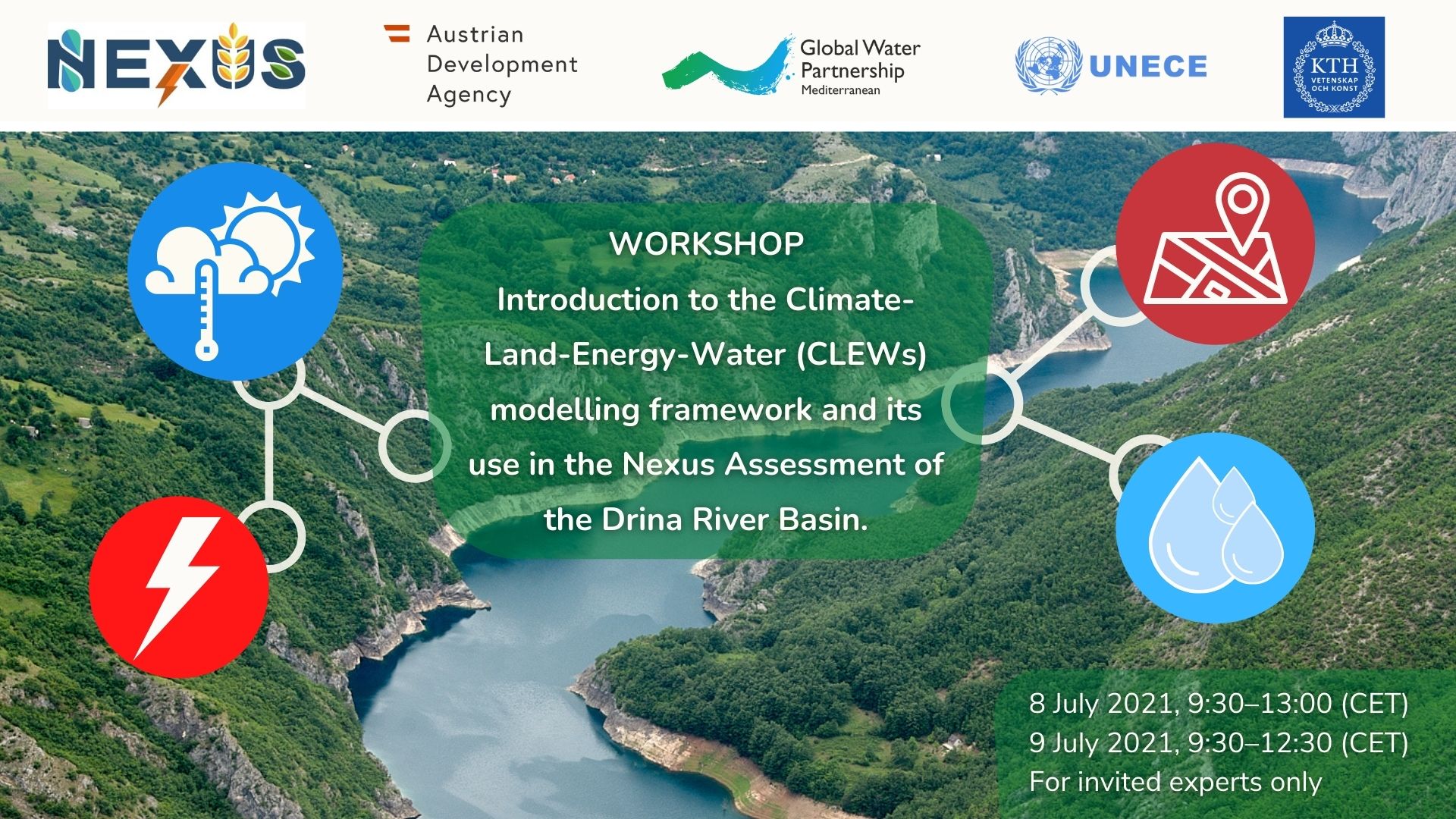What is the CLEWs model?
The Climate-Land-Energy-Water (CLEWs) framework is a modelling tool for quantitative analysis of the Nexus between the biophysical systems of climate, land (including agriculture), energy and water. It was developed in the past decade by the International Atomic Energy Agency (IAEA), the United Nations Department for Economic and Social Affairs (UNDESA), the United Nations Economic Commission for Europe (UNECE), the United Nations Development Programme (UNDP), KTH and many other partners. It has been largely employed to support the design of national and regional cross-sectoral policy packages for climate change adaptation and mitigation. Within the Nexus Assessment of the Drina River Basin under the ADA-funded “SEE Nexus Project”, the component of the CLEWs framework focusing on Energy and Water was used to quantify benefits of cross-boundary cooperation in the management of the cascaded hydropower systems of the Drina under several conditions. These conditions include for instance changing climate and non-hydro renewable power development.
The current article presents the Workshop’s key take outs and provides a summary of the Workshop’s proceedings.
The Workshop, Day 1:
The first day of the Workshop was aimed at a broad audience. The welcoming session included a round of table to introduce the participants and their expectations by Mr. Tassos Krommydas, Senior Programme Officer, GWP-Med and Dr. Francesco Gardumi, KTH Royal Institute of Technology. Dr. Gardumi continued with a short introduction to existing Nexus assessment methodologies and to CLEWs in a plenary presentation.
Dr. Gardumi’s presentation:
A Q&A session followed whereby participants expressed their expectations regarding CLEWs and their perceptions of Nexus challenges in the Drina River Basin. This session gave the opportunity to those who attended the workshop to discuss the main challenges of the basin, providing examples of how decision made in one sector can influence those in other sectors and exchange views on the CLEWs framework, its usefulness and applicability. Through the implementation of the CLEW framework, participants identified potential opportunities for enhancement of cross-border cooperation, as well as the possibility of identifying adverse effects caused by decisions aimed at another sector.
The Questions:
Finally, Day 1 concluded with a group exercise where participants discussed selected results of the Drina River Basin Nexus assessment, after being introduced to its structure, scenarios and main assumptions.
Day 2, Sessions I & II:
The second day of the workshops aimed at an audience with basic modelling experience. Firstly, the participants were guided in the creation of a simple model with the CLEWs framework (focusing only on the electricity sector, for simplicity).
With a follow-along exercise, they were introduced to ground concepts of CLEWs modelling and their link to the nexus challenges in the Drina River Basin. The exercise was carried out online and participants guided in the expansion of the model and the creation of scenarios with similar characteristics to those created in the Drina Nexus assessment. Finally, they navigated through all the resources and material used in the creation of the model, so that they know where to find it and how to use it.
Resources for the creation of the model:
The following links to supplementary materials and tools were shared during the workshop:
- Online exercise to get started with the modelling tools (Session I of Day 2): https://mybinder.org/v2/gh/KTH dESA/UNECE Capacity-building/main?filepath=cb_simple_example.ipynb
- Online exercise on scenario analysis with the modelling tool (Session II of Day 2): https://mybinder.org/v2/gh/KTH dESA/UNECE Capacity-Building/main?filepath=cb_simple_example.ipynb
- User guide for the modelling tool: https://osemosys.readthedocs.io/en/latest
- Q&A forum for the modelling tool: https://groups.google.com/g/osemosys
- Model used for the Drin Nexus assessment: https://github.com/KTH-dESA/UNECE-Capacity-Building
- Open access and free self-learning course on the CLEWs methodology, with tutorials (ca. 30 hours study): https://www.open.edu/openlearncreate/course/view.php?id=7244
